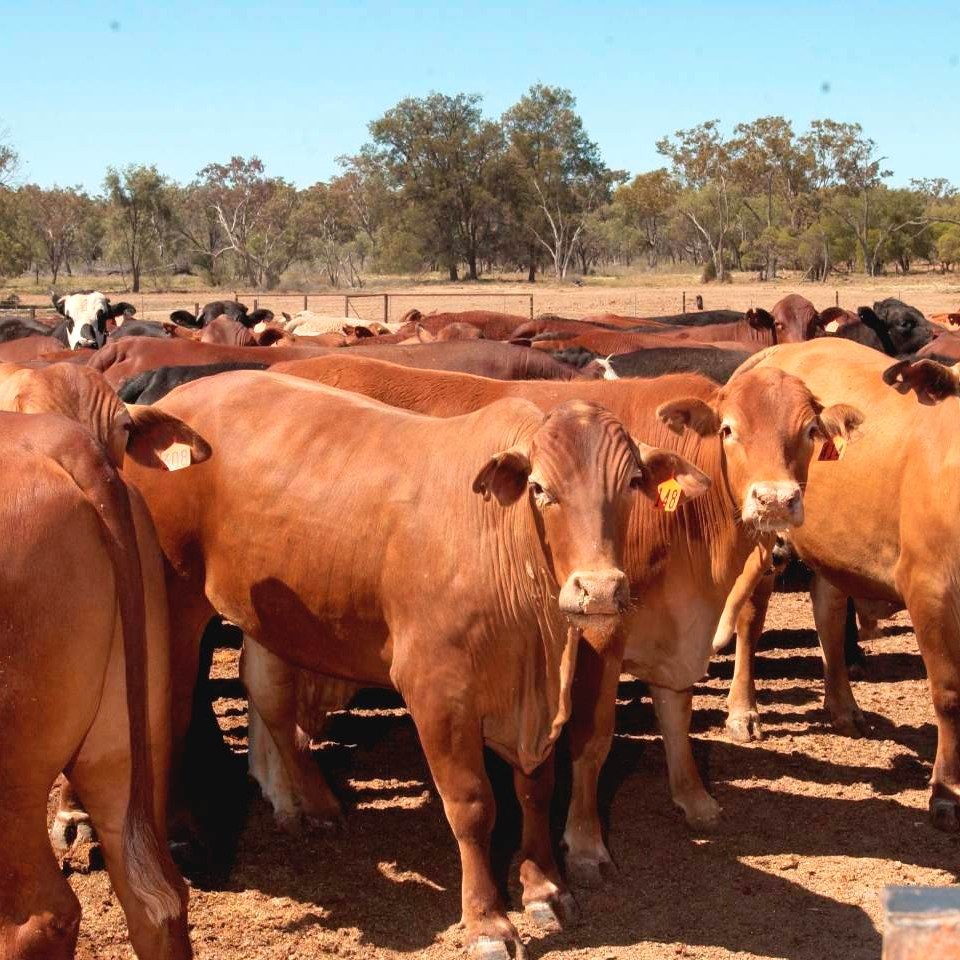 There was no significant change in outcome in Beef Central’s latest fortnightly grainfed trading budget calculated yesterday.
There was no significant change in outcome in Beef Central’s latest fortnightly grainfed trading budget calculated yesterday.
But given the higher number of Indicus-influenced feeder cattle that have flowed into Queensland feedlots over the past four or five months, it is worth noting the contrasts in profitability forecast on cattle showing a little more hump.
Yesterday’s normal breakeven based on flatback 100-day cattle entering the feedlot now and closing-out towards the end of June produced a trading result of negative $50, the same as the previous calculation a fortnight ago.
But plug-in a lower feeder steer purchase price into our algorithm, reflective of current prices for higher-content feeder cattle from western parts of the state and the NT where seasonal conditions are bad, and the position starts to change.
For yesterday’s regular trading budget based on flatback steers, most of the variables remain unchanged. The feeder steer buy price ex Darling Downs remains at 175c/kg, on the basis of continued dry conditions in western areas of NSW, Victoria and Queensland. Evidence suggests feeders fitting our profile are trading currently at 170-180c, while higher grade Indicus feeder cattle this week were trading in the mid-160s.
Valuing yesterday’s 450kg flatback feeder steer at 175c/kg values him at $787, back $23 on a month ago, and $179 less than what he was worth a year ago when he was quoted at 215c/kg.
Ration price for yesterday’s trading budget is unchanged from a fortnight ago to $305/t. There was still some variance in finished ration prices evident among downs feedlots yesterday, however, with quotes from as low as $280 to $320/t.
The ration price of $305/t attributed in yesterday’s trading budget represents a total feeding cost over 105 days of $470 on our trading steer. Total production cost is calculated at $1355, down $32 on a budget done this time a month ago, due to softer feeder and ration prices.
Cost of gain, using our chosen variables (2kg/day ADG, for 210kg gain over 105 days) is down a little to 228c/kg, from 233c/kg back in early February. This time last year, the cost-of-gain was 187c/kg on a $250/t ration price, about $55/t or 20pc lower than yesterday’s figure. Feeders back a year ago were worth close to 215c/kg, however.
The above variables deliver a breakeven figure in yesterday’s budget of 384c/kg dressed weight on a 100-day feeding exercise, down 16c/kg from a breakeven of 400c/kg in mid-January.
Current forward public grid prices from Southeast Queensland processors for June, week three, are around 370c, although there were a number of cattle traded recently at rates below that.
All that suggests a trading loss on Beef Central’s regular variables yesterday of minus-$50.
Better result on Indicus types
Given recent feedlot intakes of cattle with a bit more Indicus content, however, its worth exploring profitability using other variables.
Currently higher Brahman content feeders are changing hands at around 165c/kg liveweight. For simplicity, no adjustment was made in calculations for Indicus feeding performance, but that $45 cheaper feeder price has a big bearing on trading budget outcomes. It delivers a much ‘kinder’ trading loss for June close-out of just $4.
Find a feedlot with a ration price at $290/t, instead of the $305 applied in yesterday’s budget, for argument’s sake, and the sums stack up even better, producing a $20 profit to the owner. That’s based on a lower overall production cost of $1285 ($70 less than for the normal steer and ration price), and a breakeven of 364c.
On that basis, why aren’t feedlots feeding even more Indicus cattle?
The answer lies in the fact that many lots have a natural limit in the number of higher content cattle they can effectively feed. Different orders and different customers won’t take as many high-grade 100-day cattle, for compliance, brand specification, MSA boning group and other reasons.
This means some yards will continue to have a preference for the softer crossbreds, while others are more open to feeding more cattle with some hump.
But for a portion of contracts for many lotfeeders, higher-grade cattle can currently look quite attractive, a prominent lotfeeder said yesterday.
It’s precisely the sort of information that western and northern Queensland beef producers will hear during upcoming retained-ownership feedlot workshops (see this morning’s separate story).
20c/kg advantage in earlier forward contracts
Looking back at 100-day cattle that went on feed in November at forward-contract meatworks rates of 390c/kg, those cattle stack-up well compared with a current spot rate for 100-day slaughter ex southern Queensland of 370c.
That means the vendors of those forward-bought cattle are effectively 20c/kg dressed weight in the money, worth about $70 a head, than they would have been by selling those steers on today’s spot market.
That difference is also making trading conditions difficult for processors buying those contracted cattle, however, because they are selling that meat in the market against product coming into the spot market at a 20c/kg carcase weight advantage.
Having said that, there was some ‘wet weather’ money around for 100-day grainfed cattle this week, as processors struggled to keep kill rosters full due to rain-induced cancellations and road closures.
That bonus tends to be fairly short-lived, though.
- Beef Central's regular 100-day grainfed breakeven scenario is based on a representative standard set of production variables, ex Darling Downs. They include a 450kg liveweight feeder steer fed 105 days; 356kg dressed weight at slaughter; ADG of 2kg; consumption 15kg/day and a NFE ratio of 7.5:1 (as fed); $25 freight; typical implant program. Bank interest is included. It is important to note that variations exist across production models (feed conversion, daily gain, mortality, morbidity, carcase specification); from feedlot to feedlot; and between mobs of cattle. For a more specific performance forecast on a given mob of cattle, consult with your preferred custom feeder.
